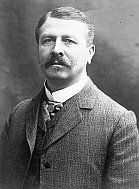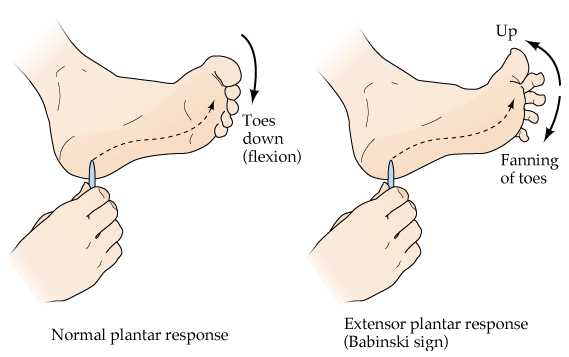Joseph Babinski
From Psy3241
Joseph François Félix Babinski was born in Paris in 1857 to parents of Polish decent. He graduated from the University of Paris in 1885 with a degree in medicine. Babinksi later studied under Jean-Martin Charcot, a very influential neurologist whose research contributed to Charcot-Wilbrand syndrome (visual agnosia and inability to revisualize images) as well as hysteria and the symptoms and naming of Parkinson's Disease.
Babinksi wrote his doctorate thesis on the pathology of multiple sclerosis and passed his medical exam in 1890. He took a test to become an associate professor at Hôpital de Salpêtrière, but did not pass. It is said that the test proctor, Charles Bouchard, a previous student of Charcot may have failed Babinski because of falling out with their professor. Babinksi never retook the test for associate professor and in 1895 moved to the Hôpital de la Pitié, where he conducted research until he retired in 1922.
Influential Work
Babinski has numerous neurological findings, including the symptomatology of lesions in the pons, pathology of the cerebellum and the exact locations of spinal tumors. In 1896, Babinksi presented a short paper to the Biological Society of Paris, on a topic that was later coined “The Babinksi Sign”. He found that pricking or stroking the sole of the unaffected foot of a patient suffering from hemiplegia causes the withdrawal of the leg and flexion of the metatarsal bones in the toes. However, stroking the affected foot causes extension of the metatarsal bones, and the fanning of the toes. This finding was attributed to lesions or diseases that affect the corticospinal tract.
In 1914, Babinski coined the term anosognosia, in his research on patients with left hemiplegia (from right hemisphere damage) who ignored or were unaware of their motor impairment. Babinski stated that overt, verbal denial was necessary for the diagnosis of anosognosia (however, it was later found that those with left hemisphere damage may also suffer from Broca's aphasia or Wernicke's aphasia, limiting their ability to understand or communicate verbally).
Later Life
Babinksi helped establish the Société de Neurologie with a few colleagues, and later became the president. Leading up to his death in 1932, Babinksi suffered from Parkinsonism, a condition similar to Parkinson’s Disease. Before his death, Babinksi’s work was honored by several countries, including the American Neurological Society.
References
Heilman, K., M., Barret, A. M., Adair, J., C. (1998). Possible mechanisms of anosognosia: A defect in self awareness. Philo. Trans. R.Soc. Lond. B Biol. Sci. 90, 1903-1909.
Lance, J., W. (2002). The babinski sign. Journal of Neurology, Neurosurgery and Psychiatry. 73(4), 360-363.
Pearce, J., M. (1996). The babinski sign. The Lancet, 348(9019), 45-46.
Pearce, J., M. (2007). Misoplegia. European Neurology, 57, 62-64.


